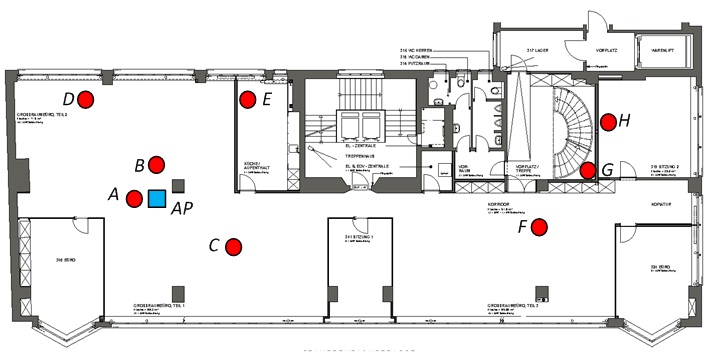Evaluating 802.11ac Features in Indoor WLAN- An Empirical Study of Performance and Fairness
We present a thorough and extensive experimental performance characterization of the achievable data throughput, jitter, and fairness of the IEEE 802.11ac standard for indoor Wireless Local Area Networks (WLANs) using real testbed deployments and statistical analysis.
October 3, 2016
WiNTECH – International Workshop on Wireless Network Testbeds, Experimental Evaluation & Characterization 2016
Authors
Lito Kriara (Disney Research)
Edgar Costa Molero (Disney Research/ETH Joint M.Sc.)
Thomas Gross (ETH Zurich)
Experimental Characterization of 802.11ac Indoor Performance and Fairness
802.11ac aims to enable the provisioning of higher throughput by incorporating wider channels, more spatial streams, and denser modulation compared to the 802.11n standard. Through testbed experiments we use multiple linear regression to gain insights on the influence of individual 802.11ac features and of their combinations on network performance and fairness for various link and interference scenarios. We show that there is interdependence between combinations of features affecting the performance of the WLAN differently than compared to the individual features. Moreover, we compare the impact of the same features in the case of 802.11ac and 802.11n in an experimental testbed setup. We further show that 802.11ac WLANs with wider channels can be fairer compared to 802.11a/n in dense environments with high interference. This paper validates experimentally that 802.11ac can be used not only for delivering very high throughput for multimedia streaming, but also for supporting applications with multiple clients requiring low jitter in a fair manner.

